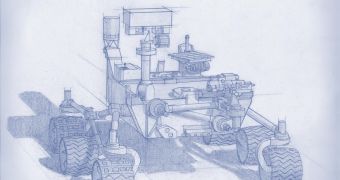The Curiosity Mars rover has been on the planet for less than a year, and it may take it another year to reach its main destination, the base of Mount Sharp. But NASA is already planning the next rover mission.
Surprisingly or not, the next rover, which may be sent to Mars in 2020, will be fairly similar to Curiosity. In fact, it will use the same chassis and probably the same power source.
It will also be deployed via the same sky-crane method. Comparatively, Curiosity is much bigger and significantly different than its predecessors, Spirit and Opportunity.
But, while the rover itself may be similar, the scientific instruments on it won't. NASA is still waiting for input from scientists in determining what instruments to equip the next rover with. These would have to be able to provide valuable data which can't be determined in any other way.
It may take a while before NASA selects the tools that will be included in the next mission, but the agency already knows what won't be, namely life-detection instruments.
Curiosity and its predecessors are equipped to look for some signs of life, but they don't have any biomaker detectors. This is because the chances of finding living organisms on the surface of Mars are very slim.
As such, scientists prefer to use tools that are likely to find what they were designed to find. For example, Curiosity has two main sample analysis tools, one for minerals and one that can detect simple organic material, but nothing that could qualify as life.
Rather than search for actual life on Mars, the next rover will focus on finding signs of life in Mars' past, a mission with a much bigger chance of success.
Spirit and Opportunity were designed to look for watery environments and were successful in their mission. Curiosity was designed to look for conditions that were favorable to life in Mars' past. It too has been successful. The next rover will search for actual signs of life in Mars' distant past.

 14 DAY TRIAL //
14 DAY TRIAL //